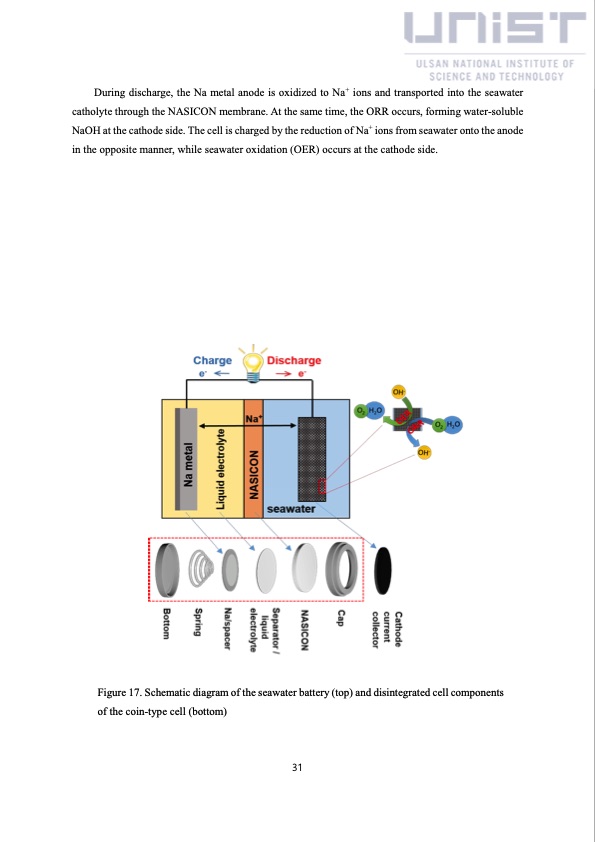
PDF Publication Title:
Text from PDF Page: 036
During discharge, the Na metal anode is oxidized to Na+ ions and transported into the seawater catholyte through the NASICON membrane. At the same time, the ORR occurs, forming water-soluble NaOH at the cathode side. The cell is charged by the reduction of Na+ ions from seawater onto the anode in the opposite manner, while seawater oxidation (OER) occurs at the cathode side. Figure 17. Schematic diagram of the seawater battery (top) and disintegrated cell components of the coin-type cell (bottom) 31PDF Image | China solar seawater battery

PDF Search Title:
China solar seawater batteryOriginal File Name Searched:
solar-seawater.pdfDIY PDF Search: Google It | Yahoo | Bing
Product and Development Focus for Salgenx
Redox Flow Battery Technology: With the advent of the new USA tax credits for producing and selling batteries ($35/kW) we are focussing on a simple flow battery using shipping containers as the modular electrolyte storage units with tax credits up to $140,000 per system. Our main focus is on the salt battery. This battery can be used for both thermal and electrical storage applications. We call it the Cogeneration Battery or Cogen Battery. One project is converting salt (brine) based water conditioners to simultaneously produce power. In addition, there are many opportunities to extract Lithium from brine (salt lakes, groundwater, and producer water).Salt water or brine are huge sources for lithium. Most of the worlds lithium is acquired from a brine source. It's even in seawater in a low concentration. Brine is also a byproduct of huge powerplants, which can now use that as an electrolyte and a huge flow battery (which allows storage at the source).We welcome any business and equipment inquiries, as well as licensing our flow battery manufacturing.| CONTACT TEL: 608-238-6001 Email: greg@salgenx.com | RSS | AMP |